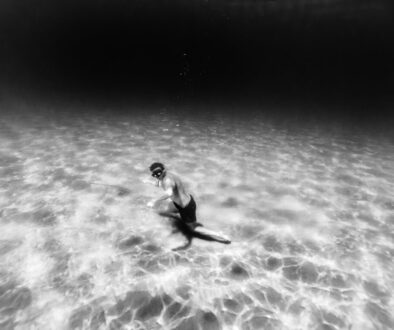Beneath the Surface: The Thrilling Art of Freediving Explained
Freediving, often perceived as a daring blend of skill and tranquility, invites us into the depths of the ocean on a single breath, offering a unique perspective on the underwater world. Unlike scuba diving, which employs bulky breathing apparatus and technical gear, freediving emphasizes minimalism and a profound connection with the sea, challenging individuals to explore their physical and psychological limits.
The Essence of Freediving
At its core, freediving is about breath-hold diving. It’s the art of descending into the ocean’s depths, interacting with its inhabitants, or exploring underwater landscapes without the aid of artificial breathing devices. This practice dates back thousands of years, originating from ancient traditions where divers would plunge into the ocean to gather food, harvest pearls, or recover items lost overboard.
Today, freediving has evolved into a competitive sport and a form of meditation and self-discovery, attracting enthusiasts who seek a deeper connection with the marine environment and their inner selves. The sport is governed by AIDA International (Association Internationale pour le Développement de l’Apnée) which standardizes rules, disciplines, and records.
Physical and Mental Discipline
The foundation of freediving is built on the ability to control and extend one’s breath. Techniques from yoga and meditation are often integrated into training, helping to improve lung capacity, oxygen efficiency, and, crucially, the ability to relax completely underwater.
Understanding and harnessing the mammalian dive reflex is another crucial aspect. This reflex, shared by all mammals, involves physiological changes that occur when our face is submerged in cold water while holding our breath — the heart rate slows, blood vessels in the extremities constrict, and blood is redirected towards more critical organs like the brain and heart.
Freediving Disciplines
Freediving is not a one-size-fits-all sport. It encompasses several disciplines, each with its own set of challenges and techniques:
- Static Apnea (STA): The diver holds their breath as long as possible while floating on the surface.
- Dynamic Apnea (DYN): Involves covering the greatest possible distance underwater using fins or a monofin.
- Constant Weight (CWT): The diver descends and ascends using fins, with or without the aid of ropes, without changing their ballast.
- Free Immersion (FIM): The diver uses a rope to pull themselves down and back up, without the use of fins.
Each discipline offers a different challenge but all require a deep understanding of one’s body and breathing techniques.
Safety First
Safety is paramount in freediving. Risks such as shallow water blackout, which can occur when a diver loses consciousness due to a lack of oxygen, highlight the need for rigorous training and adherence to safety protocols. It’s recommended to always dive with a buddy and within one’s limits, and to learn and practice rescue techniques.
Training and Equipment
Training for freediving focuses on breath-holding techniques, proper finning methods, equalization, safety procedures, and efficient dive recovery. Freedivers also need minimal but specific gear, including a mask, snorkel, fins, a wetsuit for buoyancy and warmth, a weight belt to counteract buoyancy, and a dive computer to monitor depth and time underwater.
The Allure of the Deep
Freediving is not merely a sport; it’s an expression of the human spirit’s capability and an exploration into the depths of the mind and the ocean. The silence of the underwater world, combined with the need for mental stillness and the physical challenge, offers an almost spiritual experience.
Many are drawn to freediving because it represents a return to nature, an escape from the noise of modern life, and a way to test their personal boundaries. Whether exploring coral reefs, shipwrecks, or swimming alongside marine life, freediving offers a unique and intimate experience that is as rewarding as it is challenging.
In conclusion, freediving is more than just a sport—it’s a journey into the unknown, requiring mastery over the body and mind. It combines the thrill of exploration with the serene beauty of the underwater world, making it one of the most compelling forms of aquatic adventure today.


